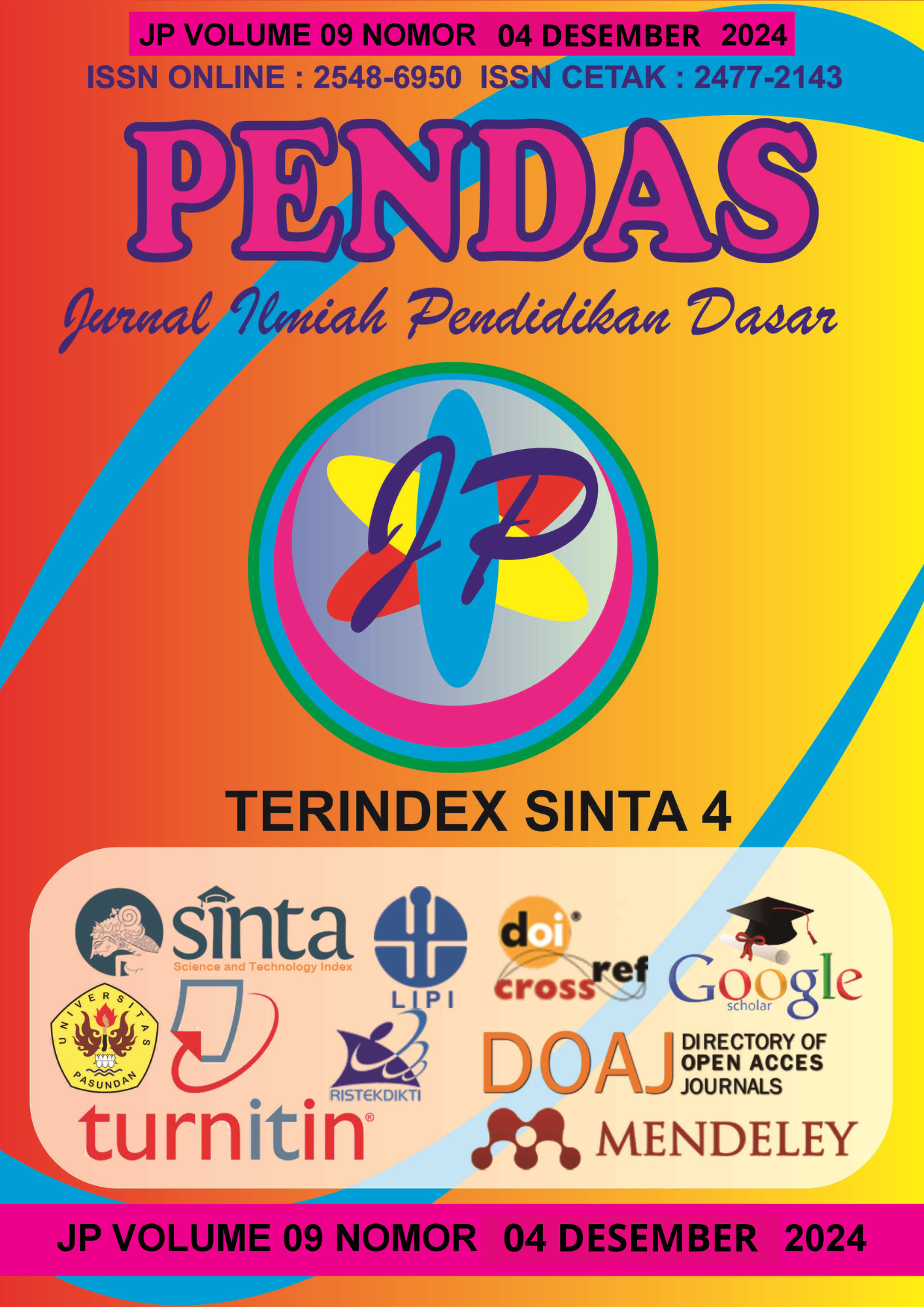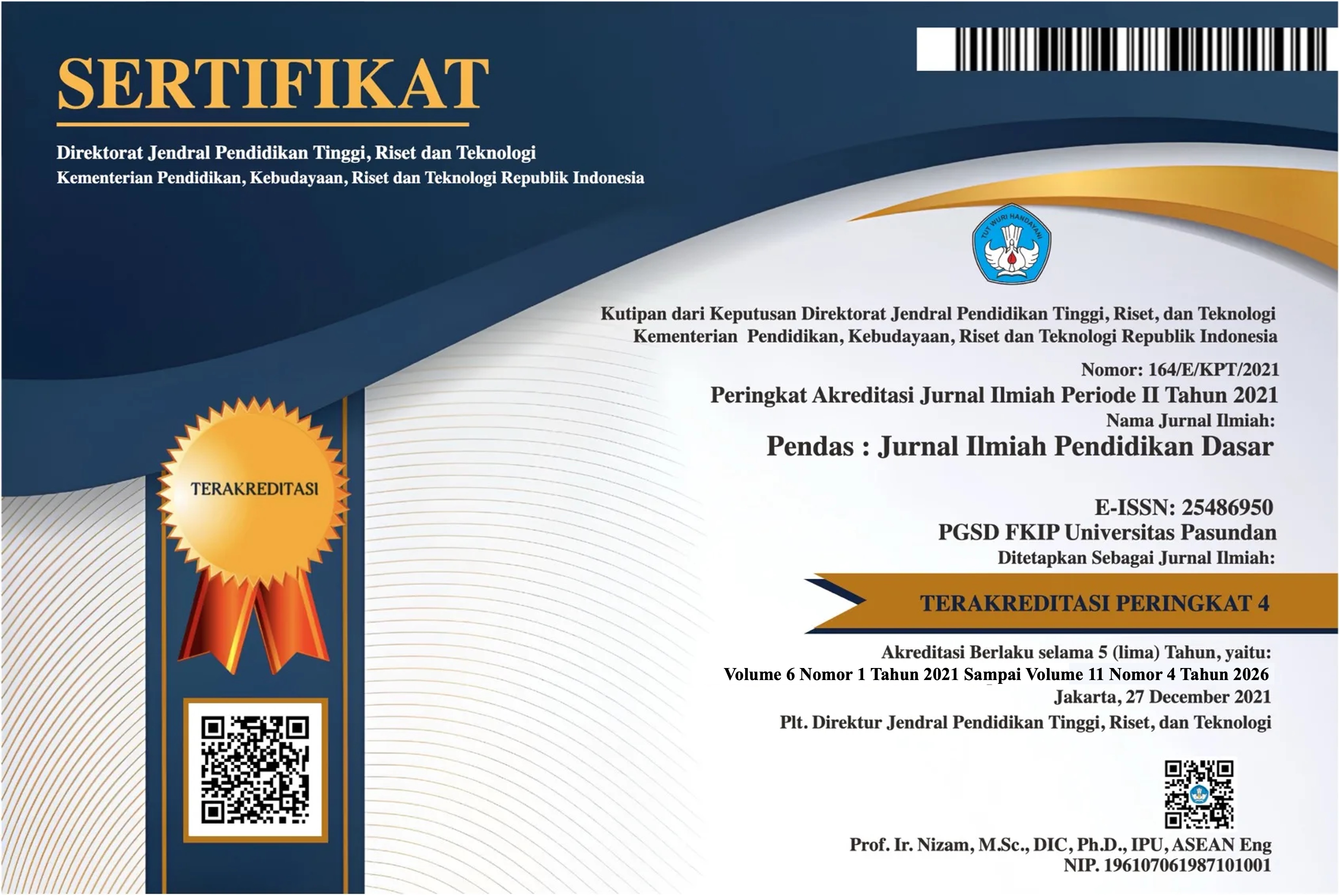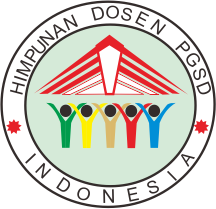PENGEMBANGAN MEDIA PEMBELAJARAN VIDEO ANIMASI BERBASIS APLIKASI CANVA PADA MATA PELAJARAN IPAS MATERI CIRI-CIRI MAKHLUK HIDUP
DOI:
https://doi.org/10.23969/jp.v9i04.19031Keywords:
canva application, characteristics of living things science, learning media, animated videosAbstract
This study has 4 problem formulations, namely (1) What are the characteristics of Canva media in the subject of Natural Sciences, the material on the characteristics of living things?, (2) Does the development of animated video learning media based on the Canva application in the subject of Natural Sciences, the material on the characteristics of living things meet valid criteria?, (3) Does the development of animated video learning media based on the Canva application in the subject of Natural Sciences, the material on the characteristics of living things meet practical criteria for use?, (4) Is the development of animated video learning media based on the Canva application in the subject of Natural Sciences, the material on the characteristics of living things effective for use? Then the objectives of the problem formulation are (1) Developing the characteristics of animated video learning media based on the Canva application in the subject of Natural Sciences, the material on the characteristics of living things, (2) Testing the validity of animated video learning media based on the Canva application in the subject of Natural Sciences, the material on the characteristics of living things, (3) Testing the practicality of animated video learning media based on the Canva application in the subject of Natural Sciences, the material on the characteristics of living things, (4) Testing the effectiveness of animated video learning media based on the Canva application in the subject of Natural Sciences, the material on the characteristics of living things. The method used in this study is ADDIE. The results of the study show that Canva-based animated video learning media in the subject of science has the following advantages: Canva provides professional and easy-to-understand visual content, and motivates student engagement. This media has been validated by experts and has been proven to improve student understanding compared to traditional methods. In addition, this media is practical to create and share, supporting classroom and distance learning. Finally, animated videos are effective in increasing engagement and providing faster feedback, making learning more enjoyable. The conclusion of the development of Canva-based animated video learning media in the subject of science with the material on the characteristics of living things is: first, Canva provides an attractive and customizable visual content design, increasing student engagement. Second, this media is valid and in accordance with the curriculum, and meets academic standards. Third, this media is practical for teachers to use to create and share content, facilitating student access. Finally, this media is effective in improving student understanding, as evidenced by the increase in pre-test and post-test scores.
Keywords: Learning media, animated videos, Canva application, science, characteristics of living things.
Downloads
References
Azizah, O. N., Rofian, R., & Putriyanti, L. (2023, October). Pengembangan Pembuatan Media Poster Animasi Sebagai Pencegahan Tindakan Bullying Di SDN Kalicari 01 Semarang. In Seminar Pendidikan Nasional (SENDIKA) (Vol. 3, No. 1).
Gandana, G., 2019. Literasi ICT dan Media Pendidikan dalam Perspektif Pendidikan Anak Usia Dini. Tasikmalaya, : Ksatria Siliwangi.
Murtikasari, Y. A., Patonah, S., & Sukamto, S. (2024). Membangun Keterampilan Proses SAINS Melalui Modul Ajar Inovatif Berbasis STEM Pada Materi Gaya DisekitarFase B. Cerdas Mendidik, 3(1).
Puspitasari, J. F., Patonah, S., & Sukamto, S. (2024). Pengembangan Modul Ajar IPAS Berbasis STEM untuk Mewujudkan Keterampilan Dasar Berpikir Ilmiah Siswa Sekolah Dasar. Jurnal Basicedu, 8(2), 1235–1245.
Rusli, M., 2019. Multimedia Pembelajaran yang Inovatif: Prinsip Dasar dan Model Pengembangan. s.l.: Penerbit Andi.
Robert Maribe Branch, 2020, Instructional Design: The ADDIE Approad, London: Springerb Scienc+Business Media.
Rahmawati, L., Baedowi, S., & Sukamto, S. (2022). Pengembangan Perangkat Pembelajaran Berbasis HOTS Kelas V Sekolah Dasar. Dwijaloka Jurnal Pendidikan Dasar dan Menengah, 3(3), 288-294.
Rahman, R. F., Sukamto, S., & Untari, M. F. A. (2024). Pengembangan Bahan Ajar Berbasis Pendekatan Open Ended Materi Operasi Hitung Bilangan Cacah Pada Kemampuan Penalaran Matematis Siswa Kelas IV SD. Indonesian Journal of Elementary School, 4(1), 28-37.
Sa’adah, R. N. & Wahyu. Metode Penelitian R & D (Research and Development): Kajian Teoritis dan Aplikatif. Malang: Literasi Nusantara, 2020.Cetakan II
Sujana, I. W. C. 2019. Fungsi dan Tujuan Pendidikan Indonesia. Jurnal Pendidikan Dasar. 4(1): 29-39.
Sandra Desi (2022-02-12). Adit, Albertus, ed. "Apa Itu Kurikulum Merdeka? Begini Penjelasan Lengkap Kemendikbud. repositori.kemdikbud.
Sugiyono. 2019. Metode Penelitian Kuantitatif, Kualitatif dan R&D. Bandung: Alfabeta, CV.
Tanjung, R.E, & Faiza, D. (2019). Canva Sebagai Media Pembelajaran Pada Mata Pelajaran Dasar Listrik dan Elektronika Rahma Elvira Tanjung. 1) Delsina Faiza. Jurnal Vokasional Teknik Elektronik & Informatika, 7 (2), 79-8
Wibowo, F. S., Patonah, S., & Sukamto, S. (2023). Pengembangan Instrumen Soal IPA Berbasis STEM untuk Siswa Kelas IV Materi Kemagnetan dan Gaya Pada Fase B di Sekolah Dasar. Jurnal Basicedu, 7(3), 1609-1619.
Downloads
Published
Issue
Section
License
Copyright (c) 2024 Pendas : Jurnal Ilmiah Pendidikan Dasar

This work is licensed under a Creative Commons Attribution 4.0 International License.



















